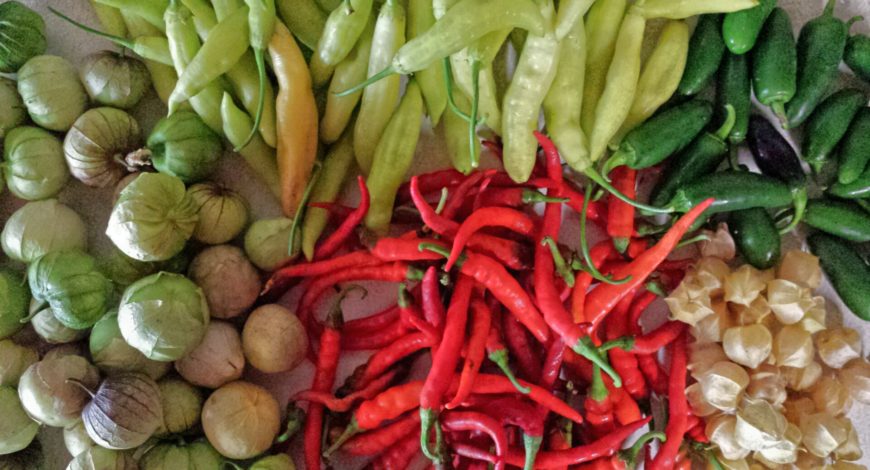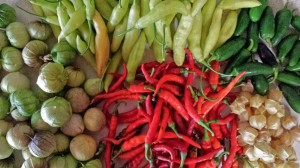 In this week’s share:
In this week’s share:
- green and purple beans
- cucumbers
- salad turnips
- icicle radishes
- eggplant
- white satin carrots
- fingerling and red skin potatoes (these will keep better if you take them out of the plastic bags)
- leeks
- summer squash
- tomatoes (these will keep better if you remove the plastic bag around the basket)
packed together in a small bag (careful not to crush it!):
- cherry tomatoes
- ground cherries
- tomatillos
- cayenne peppers (red, very hot)
- eisley wax peppers (yellow, hot)
- jalapeno pepper (green, a little hot)
Half share members, this week is a “B” week.
Farm News & Recipes
Pretty as they are, hot peppers can be intimidating. What to use them in, how much is too much, exactly how hot are they…these are all legitimate concerns. But if you take the leap, you’ll find they add great flavor and heat to a variety of dishes. The compound in peppers that give them heat, called capsaicin, is thought to have a number of health benefits. The pain caused by the heat is said to release endorphins, so once you get past the initial blast of heat the experience becomes pleasurable. Studies have suggested that capsaicin may also boost immunity, clear congestion, act as an anti-inflammatory, and even boost metabolism.
The peppers in your share, from hottest to mildest, are cayennes, eisley wax, and jalapenos. Cayennes are good fresh or dried – hang them from a string or lay on a wire rack to dry them out. Then chop up and use as crushed red pepper, or grind them up into cayenne powder. Eisley wax peppers are similar to Hungarian hot wax peppers and are best when pickled. Jalapenos are great in salsas and guacamole, as well as delicious when pickled. Both cayennes and jalapenos are great in cornbread.
Use care when handling all of them – wash your hands, knives, and cutting boards thoroughly after handling them. If you have any cuts or sensitive skin you may want to use latex gloves when chopping the cayennes. The seeds and ribs of the peppers are the hottest parts, so remove those if you want to avoid some of the heat.



